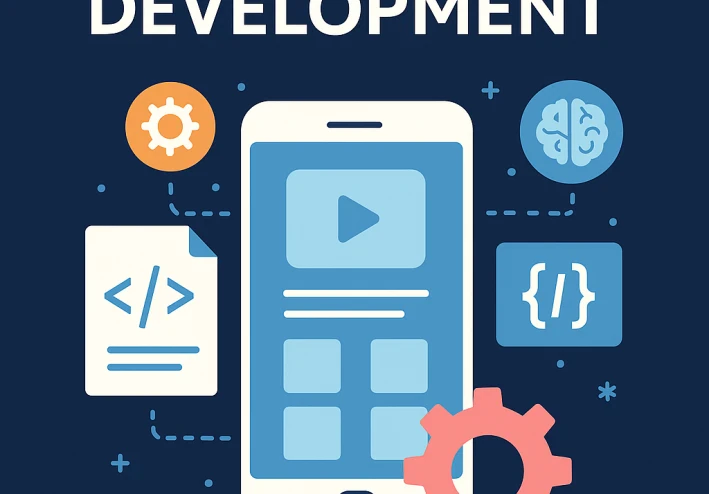
Mobile App Development: Your Ultimate Guide to Entering the World of Mobile Programming
✅ Introduction
Smartphones have evolved to become an essential part of our daily lives, and with this tremendous growth, the need for innovative and user-friendly mobile applications has surged. Whether you're a beginner or a professional looking to specialize, mobile app development is now one of the most in-demand and fast-growing fields in the tech industry.
In this article, we'll dive deep into the world of mobile app development, covering everything from basic concepts and tools to advanced tips for success.
---
📱 What Is Mobile App Development?
Mobile app development is the process of creating software applications that run on smartphone operating systems, such as:
Android – Google's mobile OS.
iOS – Apple's operating system for iPhones.
These apps are programmed using specialized languages and tools and can function as:
Native apps, built for a specific OS.
Or Cross-platform apps, which work on multiple operating systems with the same codebase.
---
🔧 Types of Mobile Applications
1. Native Apps
Built using platform-specific languages (Java/Kotlin for Android, Swift/Objective-C for iOS).
Offer high performance and excellent user experience.
2. Hybrid Apps
Built using web technologies like HTML, CSS, JavaScript with frameworks such as Ionic.
Easier to develop but less efficient than native apps.
3. Cross-Platform Apps
Use tools like Flutter or React Native to build one app that works on both iOS and Android.
Offer a balance between performance and development efficiency.
---
🛠️ Tools and Languages for Mobile Development
👨💻 Android:
Languages: Java, Kotlin
IDE: Android Studio
App Store: Google Play Store
🍏 iOS:
Languages: Swift, Objective-C
IDE: Xcode
App Store: Apple App Store
🔁 Cross-Platform:
Tool Language Features
Flutter Dart High performance, excellent UI support
React Native JavaScript Large community, backed by Facebook
Xamarin C# Backed by Microsoft, integrates with .NET
---
🧱 Stages of Developing a Successful Mobile App
1. Idea and Problem Solving
What problem does your app solve? Who is your target audience?
2. User Interface & Experience Design (UI/UX)
Use tools like Figma or Adobe XD to design a seamless experience.
3. Technology Selection
Decide whether to use Native or Cross-Platform development.
4. App Development (Coding)
Write the code, implement features, and optimize performance.
5. Testing
Use tools like Firebase Test Lab to identify and fix bugs.
6. Publishing
Launch your app on Google Play or the Apple App Store.
7. Maintenance & Updates
Listen to user feedback and continue improving your app.
---
💰 How to Make Money from Mobile Apps
Did you know that even simple apps like photo filters or task organizers can generate thousands of dollars per month? Here are popular monetization methods:
In-app advertising (AdMob, Facebook Audience Network)
In-app purchases
Subscription models
Paid apps
Partnerships and data monetization
---
📈 The Future of Mobile App Development
📱 Over 7 billion mobile users worldwide.
📊 Growing integration of AI and Augmented Reality in apps.
🚀 Increasing demand for developers skilled in Flutter and React Native.
🌍 Businesses rely more on mobile apps than websites to attract customers.
---
✨ Tips for Beginners
1. Start with one language, such as Kotlin or Dart.
2. Build simple projects, like a calculator or to-do list app.
3. Use GitHub to save and share your work.
4. Follow free online courses (Coursera, Udemy, YouTube).
5. Keep experimenting, failing, learning, and improving.
---
🏁 Conclusion
Mobile app development is not just about code—it's an art of solving problems and improving lives through technology. If you're passionate about tech, this is your chance to build something meaningful, useful, and potentially life-changing—for others and for yourself.
Start with a small step today, and tomorrow, your app could be on millions of phones!




































